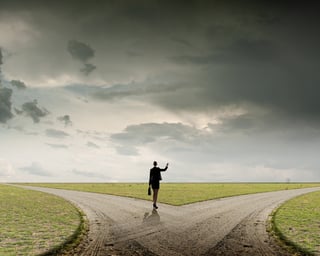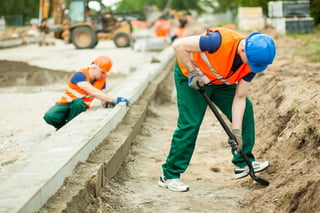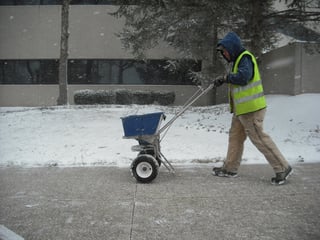 Want to see eyes roll and heads shake? Just walk into a room full of Kentucky property managers and mention grass problems.
Want to see eyes roll and heads shake? Just walk into a room full of Kentucky property managers and mention grass problems.
Many people believe lush, green turf is the hallmark of a healthy landscape—and grass is such a simple-looking plant, it doesn’t seem like it should be so difficult to maintain. However, as we shall see, turf care on commercial properties is more challenging than it looks. If you have been struggling with turf grass issues that just won’t go away, don’t feel bad. You are not alone, not by a long shot. Damaged turf is one of the most frustrating aspects of landscape maintenance in Kentucky. Here’s why, and what to do about it.
Common Kentucky Turf Grass Issues, And How To Address Them
Every commercial site has its unique challenges to turf care. Most are related to one or (most commonly) more of the following:
- Site conditions resulting from construction
- Human interaction with the site
- The natural ecology of the site
Let’s take a look at each in turn.
How Construction Affects Your Turf
 The majority of the turf grass issues we see on commercial sites can be traced directly to how the land was treated during construction. Construction results in two major insults to the soil: topsoil loss and compaction.
The majority of the turf grass issues we see on commercial sites can be traced directly to how the land was treated during construction. Construction results in two major insults to the soil: topsoil loss and compaction.
Older properties tend to have fewer construction-related grass problems, but somewhere along the line it became common practice to scrape off the topsoil and remove it during construction. What is left of the soil then becomes compacted by big equipment moving over it. Often, the ground is intentionally compacted for construction stability.
When construction is complete, an inch or two of topsoil is typically spread over this compacted, concrete-like soil. Turf planted on top of this hard pack has nowhere for its roots to go, so as soon as it runs into any kind of stressful condition it browns out and dies. Weeds can be a big issue in these areas, too, because some plants are better adapted to thin soil or soil compaction than is turf grass.
To add insult to injury, the most damaged areas are usually the ones we most want to cover with grass: the areas around the building, around parking lots, and next to sidewalks. Parking lot islands are often the worst places to establish turf, since these are largely made up of construction debris with a little topsoil on top.
Thin topsoil and compacted soils are common major obstacles to growing healthy turf. Aerating and overseeding annually can help, especially when combined with topdressing with compost to increase organic matter content. Because thin soil dries out fast and the turf grass can only grow shallow roots, irrigation systems can help reduce stress in these situations. Understanding why your turf looks thin and sparse is necessary to find the right solutions, because simply throwing more fertilizer on it is seldom the right answer.
The Human Element
The way we interact with the landscape also affects turf. On a commercial property, this can happen in any number of ways. Here are some of the most common:
Salt Damage
 This is a case where solving one season’s problem creates the next season’s issue. Spring time in Kentucky we see a lot of salt burn wherever pavement meets turf. It’s also common to find salt-damaged turf caused by parking lot runoff. Salt build-up in the soil will cause turf grass to burn and die.
This is a case where solving one season’s problem creates the next season’s issue. Spring time in Kentucky we see a lot of salt burn wherever pavement meets turf. It’s also common to find salt-damaged turf caused by parking lot runoff. Salt build-up in the soil will cause turf grass to burn and die.
The first line of defense against salt damage is to make sure your vendor has up-to-date equipment and is operating it properly. At Klausing Group, we are able to adjust the width of spray to minimize the amount of overspray we have. A little bit of overspray is inevitable if you want effective coverage, but we can keep it to a minimum with good equipment and properly trained people.
Another consideration is deicing product selection.There are deicing agent options available which are safe for plants. These can be an excellent choice for use on sidewalks. However they are expensive and not economical to use on parking lots.
Once the salt is already on the turf, it’s sometimes possible to mitigate the damage by running your irrigation system on the area to help dissolve and leach out the salt. How long to run it and how well it works will depend on site conditions, but often you will see less damage with this leaching technique.
Traffic Damage
Wherever you have a lot of pedestrian or bicycle traffic, you are likely to see damaged turf. It happens particularly in places where people cut corners or make shortcuts over the grass. Over time, continuous use of these unplanned paths compacts the soil and causes the turf to die out in those areas.
Shortcuts and cut corners are primarily design issues. As much as designers think they have it figured out, the people on the ground will always find the path of least resistance. There is no stopping them, short of putting up a physical barrier – which is an option. However, sometimes it is best to surrender the fight and accommodate what people are naturally doing, for instance, by putting in a footpath or additional section of sidewalk. In most cases we recommend this approach. We can help you update the design to meet the use that the people, in their innate wisdom, determine.
Pet Damage
 We see this grass issue a lot in HOA’s and apartment complexes with common areas: everyone’s pets go in one small area and overload the turf with nitrogenous pet waste. The result is those tell-tale dead brown spots ringed by deep green, fast growing grass—not a pretty sight.
We see this grass issue a lot in HOA’s and apartment complexes with common areas: everyone’s pets go in one small area and overload the turf with nitrogenous pet waste. The result is those tell-tale dead brown spots ringed by deep green, fast growing grass—not a pretty sight.
While it’s always a good idea to encourage pet owners to pick up after their pets (it can help to install and stock a doggie bag dispenser), you will still have to deal with the liquid waste. To put it bluntly, don’t expect to have pretty turf where you allow your residents to have dogs! One solution to consider is to put in a dog area with sand or fine gravel rather than turf.
The Ecology Of Your Property
Finally, every property has its own unique combination of habitat elements such as trees, surface roots, and shade. Surface roots in particular can be problematic because they spoil the appearance of level turf, and are easily damaged by mowing equipment, which is not good for your valuable trees. Another thing we see a lot in Kentucky is limestone bedrock very near the surface of the soil, sometimes even exposed. It’s pretty tough to get grass to grow on rock.
In addition to planting appropriate grass species for specific conditions on your property, and implementing drainage solutions where necessary, we highly recommend using mulch rather than turf under trees. Nice, lush turf can’t be grown under most trees. It will always look thin, and it won’t be vigorous enough to outcompete the weeds. When you extend the mulch line as far away from the trunk as you can, you’ll have a much better looking lawn. Your trees will be healthier, too, because lawn chemicals can actually damage trees when applied over their roots. And the right mulch with sharp-looking divisions between tree and turf areas can look great in the landscape!
Got Grass Problems? We Can Help.
Commercial property conditions are not easy on turf. While no one can wave a magic wand and make tough situations like compacted soil and heavy pedestrian traffic go away, there are plenty of ways we can help to minimize your turf grass issues or even resolve them for good.
If you would like to discuss turf grass damage solutions for your commercial property, contact us here or call us directly at 859-254-0762 (Lexington) or 502-264-0127 (Louisville.)


